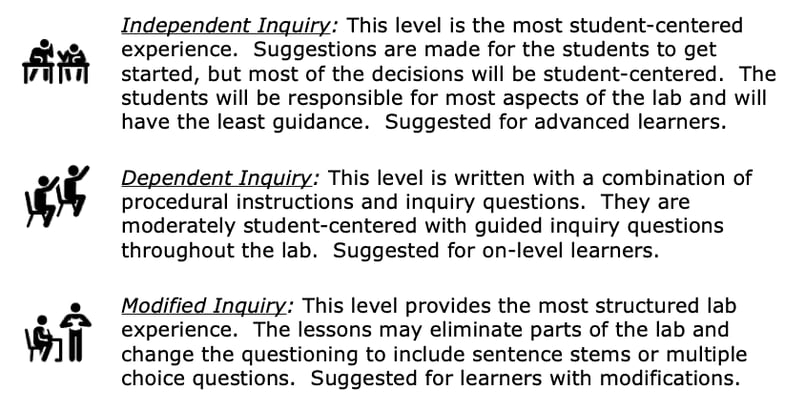Greenhouse Effect Inquiry Lab
Middle School Inquiry Lab on the Greenhouse Effect
In this lab students will model the effects of greenhouse gases, then analyze and interpret graphs and maps to determine how the greenhouse effect is changing Earth’s temperature.
Each inquiry lab will contain an essential question that will drive the lesson and make students think. For this lesson, the essential question is:
- What evidence is there for carbon dioxide as the cause of increasing global temperatures?
BACKGROUND INFORMATION AND MATERIALS LIST:
Students will begin the lab by reading the essential question and background information. This can be done individually, as lab groups, or as a whole class. If you consider lab groups, you also might include some type of whole class formative checks before digging into the lab.

Materials List:
- 2 2 L clear plastic bottles (empty)
- soil to fill the bottom of each bottle to 2″ deep
- 4 sheets white construction paper
- heat lamp
- 2 thermometers
- plastic wrap
- large rubber band
- scissors
- tape
- markers
PROCEDURE:
For this lab, students will not only create a model replicating greenhouse gasses but will also analyze data to identify patterns. You will need to plan for this lab to take the course of two class periods.
To start with the model, students will draw lines around their 2 L bottles to indicate where they will need to cut into the plastic. Filling both of the bottles with a specific amount of soil, students will then affix a thermometer to the outside of their bottle to observe temperature changes as the bottle is placed with a light/heat source pointing to it.
In order to keep the data from being skewed, students will add white construction paper preventing the light/heat source from changing the temperature directly. Students will finally wrap one bottle with clear wrap and secure it with a rubber band. Students will leave the bottles in the heat source for at least 30–50 minutes, then record the final temperature reading.
Next, students will analyze various data maps trying to identify anomalies between average temperatures and actual temperatures. Using the data provided, students will find trends, why temperatures are rising or falling, and what could be the cause of these global temperature changes.
CHECK FOR UNDERSTANDING:
At this point in the lab, students will be checked for understanding by answering questions about their findings. Here are a few that come with the lab:
- Which bottle is a better model of the greenhouse effect? Why?
- Which map shows the most “anomalies,” or differences, in actual temperatures compared to average temperatures? How can you tell?
- Does the graph above agree or disagree with your findings from the two maps? Why?
- How do the temperatures on the map compare with the previous temperature maps?
- Does there appear to be a correlation between the data on the graph and the maps? Explain.
- How does the trend of emissions compare with the trend of carbon dioxide in the air around Hawaii?
- Does there appear to be a correlation between atmospheric carbon dioxide and the temperature anomalies of the maps?
CONCLUSION
Students will go back to the essential question and write a CER (Claim, Evidence, Reasoning) to conclude the lab. Once completed, students will reflect back on their learning by answering the following questions:
- Why is it important to have data from many years when studying global temperature changes?
- What is the difference between correlation and causation?
MODIFIED AND INDEPENDENT INQUIRY VERSIONS
All of the Kesler Science inquiry labs come with three different modification levels. Each lab is differentiated using the icons below.
STANDARDS ALIGNMENT
NGSS: MS-ESS3-5 – Ask questions to clarify evidence of the factors that have caused the rise in global temperatures over the past century.

Download Over $100 in FREE Resources
For Middle School Science
Simply create a login below and gain immediate access to a selection of our Kesler Science product line worth $100 - for FREE. There's a full version of every product type! You'll also join tens of thousands of middle school science teachers who receive timely tips and strategies straight to their inbox.





